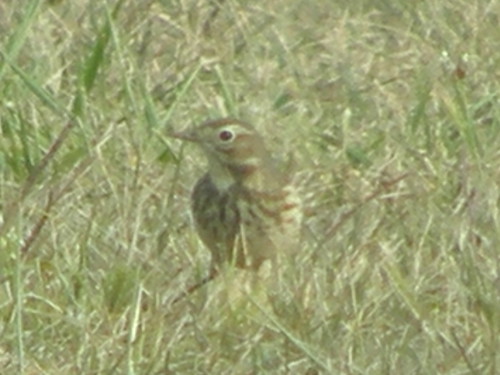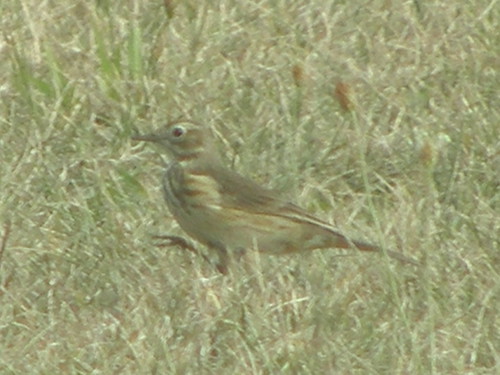It was a treat to make my fourth and fifth trips to Harns Marsh Preserve this past week.
 The fisherman above was photographed at Harns Marsh Preserve in September 2009.
The fisherman above was photographed at Harns Marsh Preserve in September 2009.On my fourth visit to the preserve, there seemed a relative absence of wildlife. I didn't see the handful of waders that I had been accustomed to seeing on previous visits. As I approached the weir, a Tricolored Heron made flight across the expanse of water to my right and then things became exhilarating as hoped.
With regret for not making much closer diligent observation, I inadvertently flushed a female Snail Kite from its perch in a pine tree as I walked under it. I can only imagine all the birding opportunities I've missed due to my inexperience and virtually all birds I've observed having the ability of being extremely well camouflaged.
 The Red-shouldered Hawk above was photographed at Harns Marsh Preserve in September 2009.
The Red-shouldered Hawk above was photographed at Harns Marsh Preserve in September 2009.I had the Harns Hawk on my mind after speaking to my friend Suzanne on the way to the preserve. She told me the preserve was named after it. This bird must be known by another name as I did not find it in my Sibley Guide to Birds upon my return home.
In all, I made the walk nearly exactly as I had upon my first visit to the preserve three weeks ago.
 The Red-shouldered Hawk above was photographed at Harns Marsh Preserve in September 2009.
The Red-shouldered Hawk above was photographed at Harns Marsh Preserve in September 2009.The Limpkin was not to be seen closely in the trees, but more closely on the ground as seems more typical for this species. Its calls were again distinctive, but did not carry across the marsh from any perspective I've experienced on preceding visits to the preserve.
On the way back to the weir, after observing the birds typically seen, I heard the call of a Limpkin relatively strongly from the north and a reply much closer to me from a stand of pines. It caused a Snail Kite within them to take flight and exit the area. I was never able to catch sight of the closer Limpkin as it was extremely well hidden.
 The Limpkin above was photographed at Harns Marsh Preserve in September 2009.
The Limpkin above was photographed at Harns Marsh Preserve in September 2009.My first sighting of the Pileated Woodpecker at the preserve was made on my fourth visit. I saw it upon my entry and was excited to still see it where I had left it upon my return from what I would describe as an ideal vantage point at the preserve where there is some welcome shade.
After a twenty minute observation of the woodpecker diligently attempt to find some insects under some tree bark, I watched it settle for the consumption of some berries high above the ground when it ultimately made its distinctive flight well out of range.
 The Snowy Egret above was photographed at Harns Marsh Preserve in September 2009.
The Snowy Egret above was photographed at Harns Marsh Preserve in September 2009.The Red-bellied Woodpecker was in the immediate company of the pileated. Also with the two woodpeckers in the cypress strand was a Blue-gray Gnatcatcher. I was not able to get a photograph of the latter, but very much enjoyed its call which is my favorite.
A female Snail Kite made a snatch of its quarry from the south marsh which I've observed on most of my visits to the preserve. This observation was preceded by photographing the male which was on the tree typically populated by vultures.
 The Snail Kite above was photographed at Harns Marsh Preserve in September 2009.
The Snail Kite above was photographed at Harns Marsh Preserve in September 2009.The male kite was in somewhat good light for a shot when he was about to consume the snail, and then changed his perch. I moved on after light conditions were abysmal with the bird in the shade.
I had walked to the area I have seen the Glossy Ibis which I don't recall observing on my fourth trip to the preserve at all.
 The Snail Kite above was photographed at Harns Marsh Preserve in September 2009.
The Snail Kite above was photographed at Harns Marsh Preserve in September 2009.Media Coordinator, for
BirdPatrol.org, Gayle Schmidt, has confirmed my Rock Dove sighting on 8 September 2009 as the 120th bird species to be documented at the preserve. The pigeons had a great variety of plumage, which for me, made the sighting especially extraordinary.
On my last three visits to Harns Marsh Preserve, I've had the opportunity to photograph a duck flying low at me from the north, but haven't been able to react quickly enough to get the shot.
 The Great Egret above was photographed at Harns Marsh Preserve in September 2009.
The Great Egret above was photographed at Harns Marsh Preserve in September 2009.My fifth visit to the preserve was very interesting as I observed the Red-shouldered Hawk consuming a Little Blue Heron. After I inadvertently caused the hawk to leave its quarry (with great effort on its part to take flight with the remains of the heron), I continued to observe the scene for about thirty minutes. The hawk didn't return to the massacre though stayed close enough for me to be aware of its presence and have regret for disturbing its meal.
The Turkey and Black Vultures apparently became aware of the carcass as they circled the area for quite a while before I chose to give the hawk some peace.
 The Turkey Vulture above was photographed at Harns Marsh Preserve in September 2009.
The Turkey Vulture above was photographed at Harns Marsh Preserve in September 2009.My visit to the preserve was not planned before getting there. I was content to hang around the area I'd become so familiar with, but chose, after getting the inspiration from a fisherman, to walk around the preserve's boundary.
As I was nearly out of earshot from him, he asked me if I was afraid of snakes. I could only reply that I believed the cottonmouth to be observed here. Since looking at Gayle's checklist for the preserve, I'm much more cautious when walking in the grass.
 The Queen Butterfly above was photographed at Harns Marsh Preserve in September 2009.
The Queen Butterfly above was photographed at Harns Marsh Preserve in September 2009.The trip around the preserve was much longer than I had anticipated and at one point I might be described as delirious as I'd swear that the horizon was in motion when I stopped to take a photograph.
It was a very rewarding experience nonetheless as I observed the Sandhill Crane for the first time. I regret that I flushed a pair while unaware of their presence and was only able to get a parting few shots of them.
 The Mottled Duck above was photographed at Harns Marsh Preserve in September 2009.
The Mottled Duck above was photographed at Harns Marsh Preserve in September 2009.I also saw numerous Snail Kite and Limpkin, as well as the Mottled Duck fairly closely (which I believe to be the ducks I've seen flying toward me on previous visits to the preserve). The Great Egret was in abundance as well in the company of the Pied-billed Grebe that I hadn't seen in a long while.
I didn't see the Glossy Ibis again today, which was disappointing, but saw four Belted Kingfisher in the oaks and over the marsh to the north of the trail head.
 The Snail Kite above was photographed at Harns Marsh Preserve in September 2009.
The Snail Kite above was photographed at Harns Marsh Preserve in September 2009.There are prolific smaller creatures here including butterflies which may suite your interest as well. The butterflies I've observed at the preserve thus far (late summer) have been quite worn showing significant damage to their wings.
Though I was very fortunate not to observe the fire ant on previous visits, today was not the case. While attempting to photograph a butterfly, I realized I was in trouble after a sting from one of the ants on my hand. I immediately looked down to see one of my tripod legs completely covered by the ants. I spent upwards of ten minutes removing them from the gear before I continued on.
 The Snail Kite above was photographed at Harns Marsh Preserve in September 2009.
The Snail Kite above was photographed at Harns Marsh Preserve in September 2009.I hadn't experienced this pest as a nuisance near the trail head, but it will easily be found on your walk around the preserve. Be very careful to avoid these ants which are extremely aggressive.
Cooler weather will certainly bring an abundance of additional wildlife and more visitors to this magnificent place.
 The Pileated Woodpecker above was photographed at Harns Marsh Preserve in September 2009.
The Pileated Woodpecker above was photographed at Harns Marsh Preserve in September 2009.A two to four hour walk should be expected to see Harns Marsh Preserve in its entirety.
 Parrots at the entrance to the zoo. They are not in a cage.
Parrots at the entrance to the zoo. They are not in a cage. Wild egret hanging around the manatee pool (looking for a handout).
Wild egret hanging around the manatee pool (looking for a handout).
 Pretty bird in the aviary.
Pretty bird in the aviary.


















 Osprey on our neighbor's sailboat at sunset (view from our window).
Osprey on our neighbor's sailboat at sunset (view from our window).
















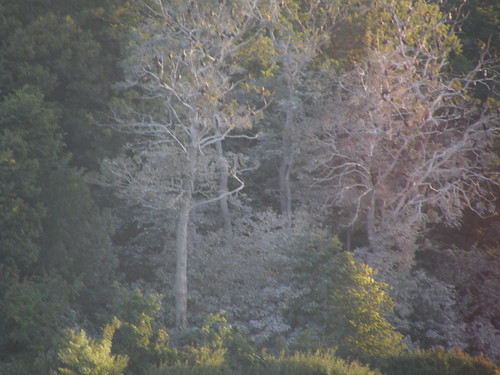
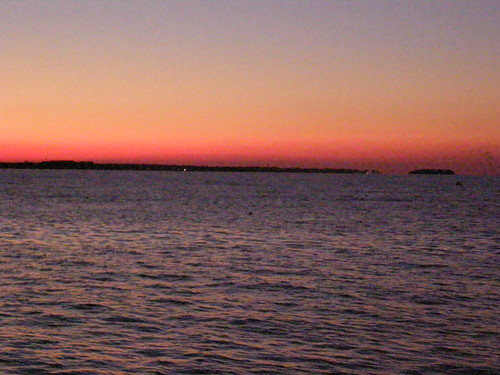
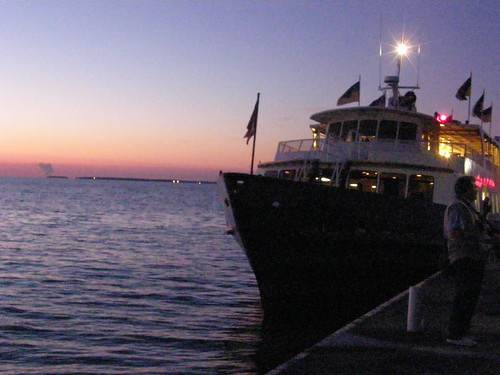
.JPG)

.JPG)
